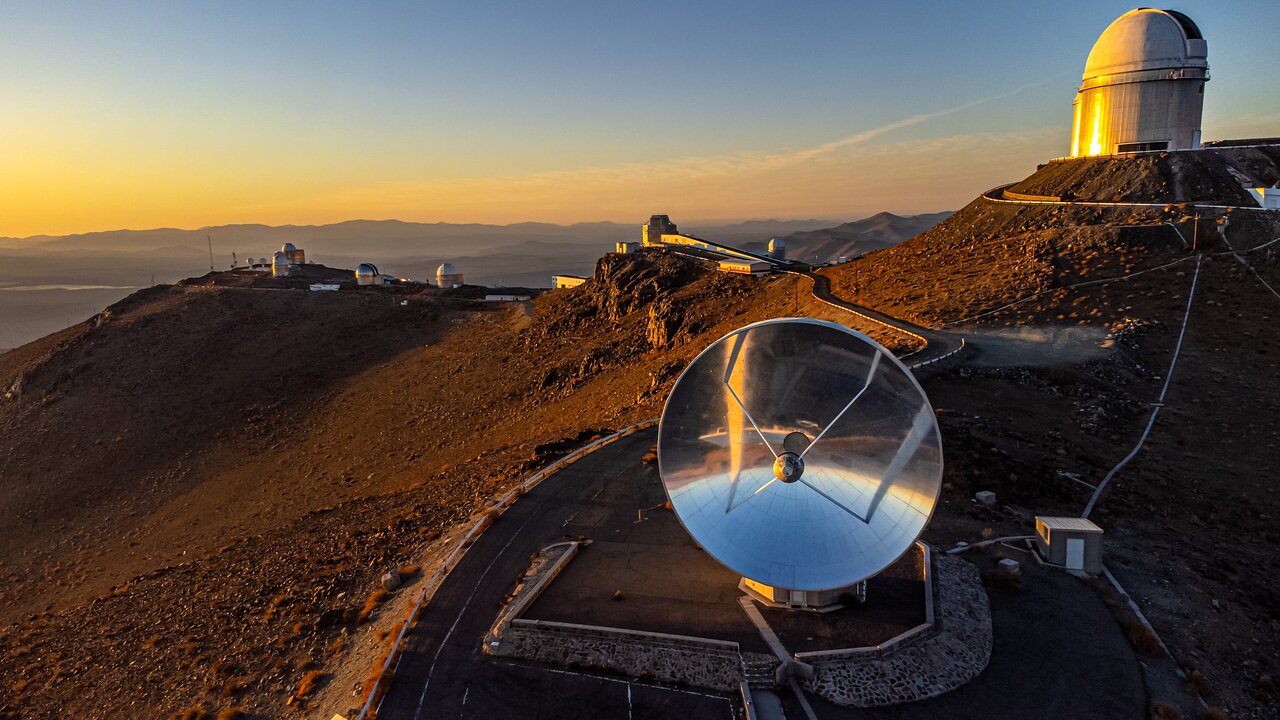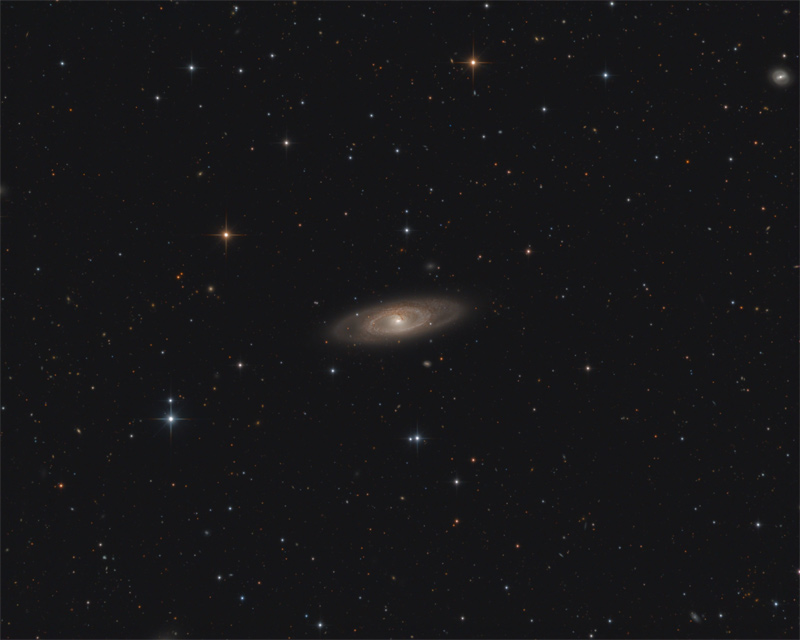Page 1 of 2
Found Images: 2022 September
Posted: Thu Sep 01, 2022 6:22 pm
by bystander
Have you seen a great image or video somewhere that you think would make a great APOD? Nominate it for APOD! Please post as much information here as you have about the image/video with a link to any source(s) for it you know of here, and the editors will take a look.
When posting the image itself, please do not post anything larger than a thumbnail here; please honor the copyright holder's copyright.
Please keep hotlinked images under 500K.
Thank you!
<< Previously
Re: Found Images: 2022 September
Posted: Fri Sep 02, 2022 10:47 pm
by starsurfer
Cassiopeia A
https://www.hansonastronomy.com/casa
Copyright: Mark Hanson
Re: Found Images: 2022 September
Posted: Fri Sep 02, 2022 10:49 pm
by starsurfer
StDr Object 32 region
https://www.astrobin.com/6bblb5/F/
Data: Yann Sainty
Processing: Marcel Drechsler
Re: Found Images: 2022 September
Posted: Sun Sep 04, 2022 9:51 pm
by starsurfer
NGC 1869-71
https://www.chart32.de/index.php/component/k2/item/289
Copyright: CHART32
Processing: Bernd Flach-Wilken
Re: Found Images: 2022 September
Posted: Sun Sep 04, 2022 9:53 pm
by starsurfer
ESO: A Mirror to the Past (La Silla)
Posted: Mon Sep 05, 2022 5:29 pm
by bystander
A Mirror to the Past
ESO Picture of the Week | 2022 Sep 05
The sunset seen in this Picture of the Week creates a magnificent setting over the telescope village of ESO’s
La Silla Observatory in the Chilean desert. La Silla is home to many telescopes, some still in active use, like the ESO
3.6-metre telescope situated at the highest summit to the right and currently on the hunt for exoplanets.
Some of La Silla’s telescopes have been retired, like the Swedish-ESO submillimetre Telescope (
SEST) that’s seen in the foreground with its shiny 15-metre dish. Built in 1987, SEST was at the time the largest telescope of its kind in the southern hemisphere. Thanks to its wavelength range, it enabled scientists to study the very distant Universe, and to make many exciting discoveries related to stellar nurseries.
As time passed, new technology brought forth more advanced telescopes, which also observe in the (sub)millimeter part of the spectrum, such as the Atacama Pathfinder Experiment (
APEX) and the Atacama Large Millimeter/submillimeter Array (
ALMA) which ESO partners with. Close to APEX and ALMA seeing first light, SEST was decommissioned in 2003. Still standing at La Silla, SEST acts like a mirror, allowing us not only to see the reflection of the desert and the sky, but also provides a mirror to the past of astronomical exploration.
ESA: Galactic Overlap (LEDA 2073461)
Posted: Mon Sep 05, 2022 5:43 pm
by bystander
Galactic Overlap
ESA Hubble Picture of the Week | 2022 Sep 05
Two overlapping
spiral galaxies are pictured in this image from the NASA/ESA Hubble Space Telescope. The two galaxies, which have the uninspiring names SDSS J115331 and
LEDA 2073461, lie more than a billion light-years from Earth. Despite appearing to collide in this image, the alignment of the two galaxies is likely just by chance — the two are not actually interacting. While these two galaxies might simply be ships that pass in the night, Hubble has captured a dazzling array of
interacting galaxies in the past.
This image is one of many Hubble observations delving into highlights of the
Galaxy Zoo project. Originally established in 2007, the Galaxy Zoo project and its successors are massive
citizen science projects which crowdsource galaxy classifications from a pool of hundreds of thousands of volunteers. These volunteers classify galaxies imaged by robotic telescopes and are often the first to ever set eyes on an astronomical object.
Over the course of the original Galaxy Zoo project, volunteers discovered a menagerie of weird and wonderful galaxies such as unusual 3-armed spiral galaxies and colliding ring galaxies. The astronomers coordinating the project applied for Hubble time to observe the most unusual inhabitants of the Galaxy Zoo — but true to the project’s crowdsourced roots, the list of targets was chosen by a public vote.
Re: Found Images: 2022 September
Posted: Mon Sep 05, 2022 10:44 pm
by starsurfer
Re: Found Images: 2022 September
Posted: Mon Sep 05, 2022 10:47 pm
by starsurfer
Medusa Nebula (Abell 21)
https://www.astrobin.com/6h92y7/
Copyright: Boris Chausov
Re: Found Images: 2022 September
Posted: Wed Sep 07, 2022 10:01 pm
by starsurfer
NOIRLab: Dynastic Vibes (RCW 86)
Posted: Thu Sep 08, 2022 4:23 pm
by bystander
Dynastic Vibes
NOIRLab Image of the Week | 2022 Sep 07
Image Credit: CTIO/NOIRLab/NSF/AURA
Processing: T. A. Rector (Univ of Alaska, Anchorage/NOIRLab),
M. Zamani (NOIRLab) & D. de Martin (NOIRLab)
The
SMARTS 0.9-meter Telescope at Cerro-Tololo International Observatory (
CTIO), a Program of NSF’s NOIRLab, has captured an echo of the past in this gorgeous Image of the Week.
RCW 86 is a literal shell of its former self, the gaseous remnant of a supernova. Some 11,000 years ago a white dwarf, itself the core of a former star, became too massive and spectacularly exploded in a
Type Ia supernova. Shockwaves reverberated through space, pushing the gas outward, whereupon it formed the multi-layered “bubble” we see today. Besides being a spectacular stellar object, the remnant may have been created by the earliest recorded supernova, observed by Chinese astronomers in 185 AD in the same area between the constellations
Circinus and
Centaurus.
Re: Found Images: 2022 September
Posted: Thu Sep 08, 2022 10:17 pm
by starsurfer
HDW 2
https://www.astrobin.com/hgwy1w/
Copyright: Peter Maasewerd
Re: Found Images: 2022 September
Posted: Thu Sep 08, 2022 10:19 pm
by starsurfer
Veil Nebula
https://www.astrobin.com/jdadkh/
Copyright: Matt Harbison
Re: Found Images: 2022 September
Posted: Sun Sep 11, 2022 10:21 pm
by starsurfer
LDN 810 and Sh2-92
http://www.capella-observatory.com/Imag ... LDN810.htm
Copyright: Josef Pöpsel, Frank Sackenheim and Stefan Binnewies
Re: Found Images: 2022 September
Posted: Sun Sep 11, 2022 10:24 pm
by starsurfer
NGC 6337
https://www.chart32.de/index.php/component/k2/item/201
Copyright: CHART32
Processing: Johannes Schedler
ESO: Wispy Dark Clouds (Barnard 92, 93)
Posted: Mon Sep 12, 2022 5:26 pm
by bystander
Wispy Dark Clouds
ESO Picture of the Week | 2022 Sep 12
Image Credit: ESO/VPHAS+ team.
Acknowledgement: Cambridge Astronomical Survey Unit
The dark clouds in this image, taken from ESO’s
Paranal Observatory in Chile, almost resemble something supernatural, like the wispy trails of ghosts in the sky. But there is no need to call the ghostbusters! These clouds, known as
Barnard 92 (right) and
Barnard 93 (left) are
dark nebulae: they look pitch black because the dense gas and dust they contain block out the background light, creating these hazy ghostlike features.
These nebulae are stellar nurseries, where new stars are born out of the collapsing dense gas and dust. This whole region of space imaged here is actually part of a much larger stellar complex, called the Small Sagittarius Star Cloud (or
Messier 24, catalogued by
Charles Messier in 1764). This area is so rich in stars that it is clearly visible to the naked eye during dark nights, in the constellation of
Sagittarius.
This image was taken with an enormous 268 million pixel camera called
OmegaCAM on the VLT Survey Telescope (
VST). OmegaCAM is designed for capturing wide fields like this image, where you could impressively fit four full Moons. This image is part of the VST Photometric Hα Survey of the Southern Galactic Plane and Bulge (
VPHAS+), which has mapped diffuse nebulae as well as both young and evolved stars in our galaxy.
ESA: Starstruck in Terzan 4
Posted: Mon Sep 12, 2022 5:40 pm
by bystander
Starstruck in Terzan 4
ESA Hubble Picture of the Week | 2022 Sep 12
Image Credit: ESA/Hubble & NASA, R. Cohen
A glittering multitude of stars in the
globular cluster Terzan 4 fill this image from the NASA/ESA Hubble Space Telescope. Globular clusters are collections of stars bound together by their mutual gravitational attraction, and can contain millions of individual
stars. As this image shows, the heart of a globular cluster such as Terzan 4 is a densely packed, crowded field of stars — which makes for
spectacular images!
The launch of Hubble in 1990 revolutionised the study of globular clusters. The individual stars in these dense crowds are almost impossible to distinguish from one another with ground-based telescopes, but can be picked apart using space telescopes. Astronomers have taken advantage of Hubble’s crystal-clear vision to study the stars making up globular clusters, as well as how these systems change over time.
This particular observation comes from astronomers using Hubble to explore Terzan 4 and other globular clusters to understand the shape, density, age, and structure of globular clusters close to the centre of the Milky Way. Unlike globular clusters elsewhere in the sky, these globular clusters have evaded detailed observation because of the clouds of gas and dust swirling around the galactic core. These clouds blot out starlight in a process that astronomers refer to as ‘extinction’, and complicate astronomical observations.
Astronomers took advantage of the sensitivity of two of Hubble’s instruments — the Advanced Camera for Surveys (
ACS) and Wide Field Camera 3 (
WFC3) — to overcome the impact of extinction on Terzan 4. By combining Hubble imagery with sophisticated data processing, astronomers were able to determine the ages of galactic globular clusters to within a billion years — a relatively accurate measurement in astronomical terms!
Re: Found Images: 2022 September
Posted: Mon Sep 12, 2022 10:12 pm
by starsurfer
M78 and NGC 2071
https://www.astrobin.com/s3mnpz/
Copyright: Keith Lisk
Re: Found Images: 2022 September
Posted: Mon Sep 12, 2022 10:15 pm
by starsurfer
Ced 51
https://www.astrobin.com/3tsy5h/
Data: Steve Milne & Barry Wilson
Processing: Steve Milne
Re: Found Images: 2022 September
Posted: Mon Sep 12, 2022 10:16 pm
by starsurfer
NGC 4449
https://www.astrobin.com/f2wa2e/
Copyright: Robert Novotný
Re: Found Images: 2022 September
Posted: Mon Sep 12, 2022 10:18 pm
by starsurfer
NGC 300
https://www.astrobin.com/zsquzi/
Copyright: Debra Ceravolo
Re: Found Images: 2022 September
Posted: Mon Sep 12, 2022 10:20 pm
by starsurfer
IC 342
https://www.astrobin.com/c4mz4g/
Copyright: Robert Novotný
Re: Found Images: 2022 September
Posted: Sun Sep 18, 2022 10:46 pm
by starsurfer
NGC 4848
https://esahubble.org/images/potw2029a/
Copyright: ESA/Hubble & NASA, M. Gregg
Re: Found Images: 2022 September
Posted: Sun Sep 18, 2022 10:48 pm
by starsurfer
Re: Found Images: 2022 September
Posted: Mon Sep 19, 2022 10:26 pm
by starsurfer
Cat's Eye Nebula (NGC 6543)
https://www.astrobin.com/wt0max/
Copyright: Toshiya Arai



